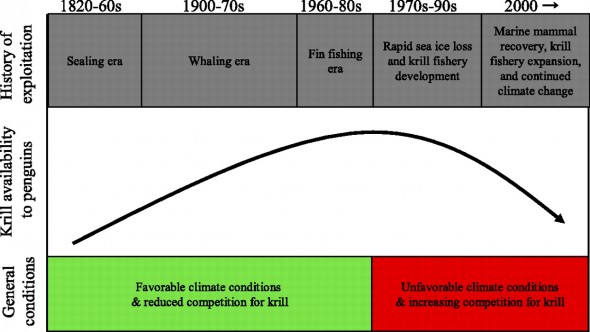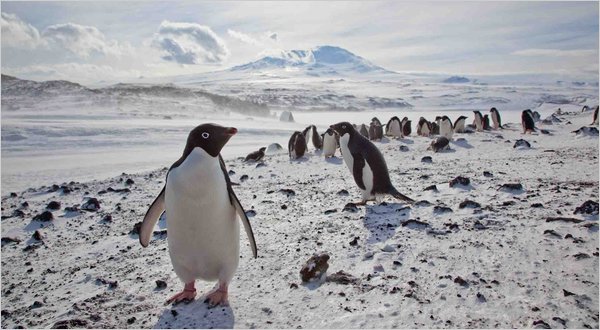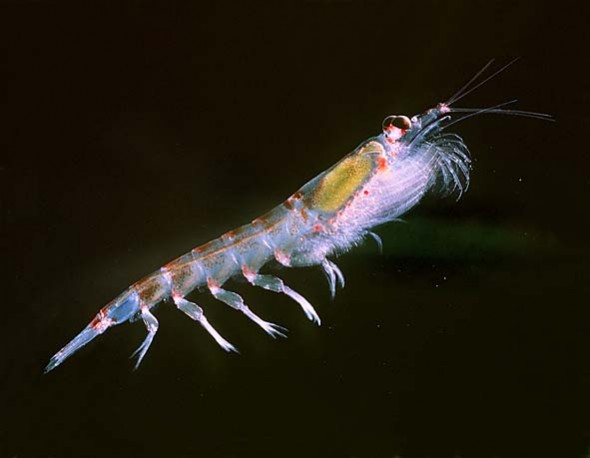At the far bottom of the earth, at the bitter end of the Pacific Ocean, lies the Ross Sea, home to a large proportion of the world’s penguins. Although it’s often considered the last intact marine ecosystem on earth, it appears there is no escape here, nor anywhere else, from the invisible miasma of CO2 produced by modern society. But, as a new study in PNAS shows, the impacts of changing climate are not simple — they interact through a complex network of food-web interactions with legacies of fishing and whaling, ultimately rippling out to the region’s penguins. And a key link — the one ring to rule them all — is krill.
The recent story of two penguin species in the region has posed a puzzle: Adelies hang out on the pack ice in winter, whereas chinstraps forage in the open water, meaning that they should show opposite responses to the declining ice cover caused by climate warming.
 And in the late 70s and early 80s they did as expected: Adelies declined with melting ice whereas chinstraps prospered in the opening water. But since then both species have declined steadily. What’s up?
And in the late 70s and early 80s they did as expected: Adelies declined with melting ice whereas chinstraps prospered in the opening water. But since then both species have declined steadily. What’s up?
The paradoxical history of penguins over the last century appear to result from a complex interplay between the twin horsemen of climate change and human harvesting — in this case fishing and whaling (see the figure). It’s long been suspected that the relentless human pressure on every other vertebrate in the southern ocean proved a boon for penguins as competition for krill was reduced. First there was the hunting of the Antarctic fur seal in the 19th century, then the decimation of whales during the wild-west days of the early 20th century, and finally the fishery for icefishes over recent decades. Indeed, penguin numbers climbed during much of the 20th century.
But as conservation measures have kicked in, the whales and seals have begun to rebound and the region’s fisheries have come under more conservative management. On top of this a trawl fishery for krill was established, all of which leads to more mouths going after the central resource of the Southern Ocean — krill. And the penguins find themselves caught between the pincers of declining sea-ice habitat and declining food.
And there is another issue. As the New York Times summarizes:
“The Ross Sea is projected to be the last place on Earth where sea ice will endure. But as the annual winter sea ice boundary retreats farther south, pack ice penguins may ultimately find themselves trapped behind a curtain of polar night for which they have no hardwired strategy.
Indeed, Dr. Ainley speculates, Adélie penguins face possible extinction not merely by a loss of habitat — but by an unshakable fear of darkness.”
Original source (open access): Wayne Z. Trivelpiecea, Jefferson T. Hinkea, Aileen K. Millera, Christian S. Reissa, Susan G. Trivelpiecea, and George M. Watters. 2011. Variability in krill biomass links harvesting and climate warming to penguin population changes in Antarctica. PNAS 108(18):7625-7628.


Leave a Reply